
views
Comprehending the On-Field Referee
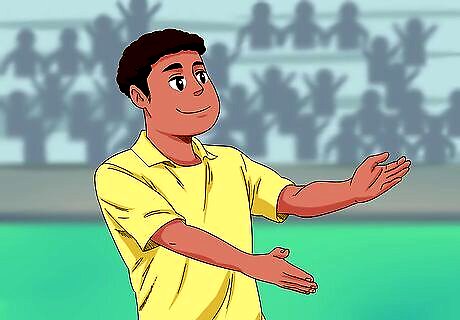
See the referee show advantage by pointing forward after foul play. The referee puts out both of their arms parallel in front of them, pointing towards the goal of the team that has the advantage. It's important to note that the referee does not blow the whistle for this signal. An advantage is played when one team has committed a minor foul, but the other team is perceived to have an advantage. Therefore, instead of calling foul, the referee lets the play continue and shows the advantage signal. For example, if a defender fouls the attacker, but the attacker still has a chance for a shot at goal, the referee shows the advantage signal. With more severe fouls, the referee stops the play immediately and gives a free-kick to the team that had the foul committed on them.
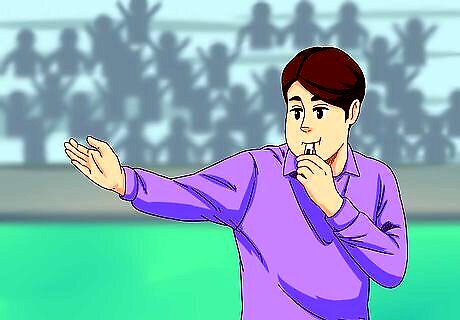
Notice the whistle and the referee pointing forward for a direct free kick. The referee blows the whistle and, with the hand that is not holding the whistle, they point (at no specific angle) in the attacking direction of the team that is receiving the free kick. Make sure to only stop play if the ref blows the whistle. For example, the referee may award a direct free kick to a team if a player on the other team, who is not the goalkeeper, touches the ball with their hands. This is the most common form of signal you see during games. Referees award free kicks for minor/mid-level fouls, where the ref judges that receiving team does not have an advantage.
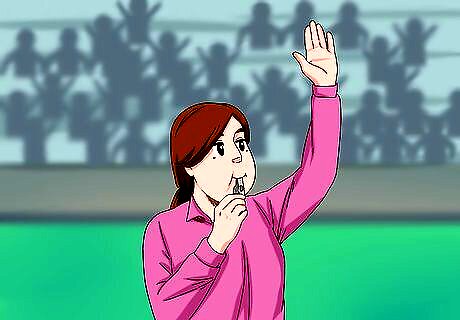
Observe the referee pointing up for an indirect free kick. For this signal, the referee blows the whistle and, with their free hand, points directly towards the sky. The referee then explains who is receiving the free kick and what for. They will also hold their hand up in the air for a few seconds while they explain which team is receiving the free kick. Indirect free kicks are different from free kicks in that you are not allowed to shoot at the goal. If you were to score from an indirect free kick, and the ball had not touched someone else on the field, the goal would not count. Indirect free kicks are much less common than direct free kicks. However, one example of how one may be awarded is if a team passes the ball back to their goalkeeper, and the goalkeeper touches it with their hands.
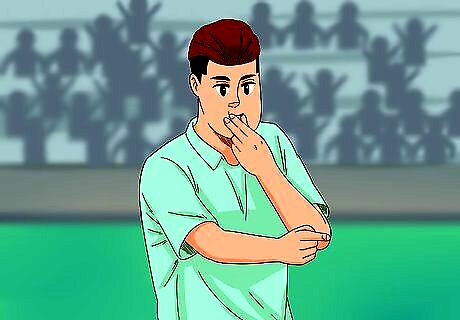
Note that the ref will point at the penalty spot for a penalty kick. To indicate a penalty kick, the referee blows the whistle and points directly at the penalty spot of the team that has been awarded the penalty. Listen for a long, firm blow of the whistle, rather than a short sharp blow. Penalty kicks are relatively rare in soccer. The ref awards them to the attacking team when a foul is committed in the goal box. In a penalty kick situation, the attacking team gets a shot at the goal 1 on 1 with the goalkeeper, from the penalty spot. An example of a penalty offence would be if someone touched the ball with their hands in the soccer net.
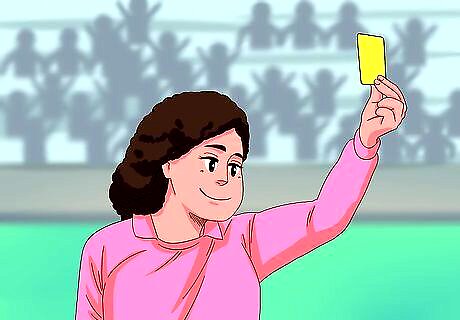
Understand that medium level offences are signified with a yellow card. If a player receives a yellow card, this is considered a warning. If a player receives a second yellow card, this is equal to one red card, and the player is ejected from the field. The referee takes the card out of their pocket, points it at the player, and then points it in the air. After this, they write the details of the offence in their notebook. An example of a yellow card offence is a harsh tackle where the tackler didn't make any contact with the ball.
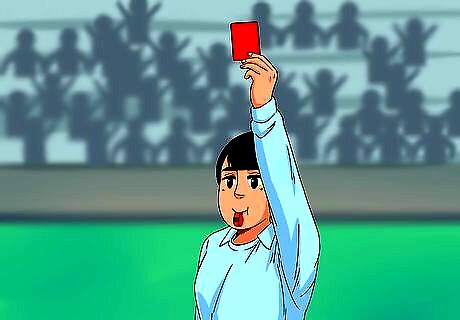
Recognize that severe offences are acknowledged with a red card. A ref gives a red card for severe offences or for multiple yellow cards. If the ref gives the player a red card for receiving 2 yellow cards, the ref will point the yellow card at them first, followed by the red card. The referee will point the red card at them and then hold it straight up in the air, just like with a yellow card. An example of an offence for a red card might be a player punching another player. A player that receives a red card is ejected from the field and is allowed no further part in the game.
Understanding the Sideline Referees
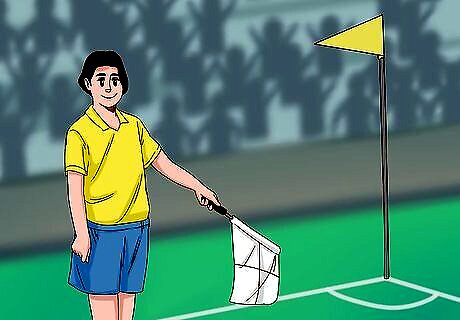
Notice the sideline ref pointing to the corner for a corner kick. The sideline referee runs down to the corner flag on their side of the field and, using the flag they are holding, points down at the corner spot. They do not blow a whistle when they do this. An example of when you see this is when an attacker takes a shot at goal and a defender deflects the ball out of bounds behind the goal. Sideline referees carry a portable flag with them around the field. They use this flag for a variety of signals, including corner kicks. The sideline referee runs up and down the field. There is one sideline referee for each half of the field. Once play passes out of their half, they stand at the halfway line until play comes back into their half.
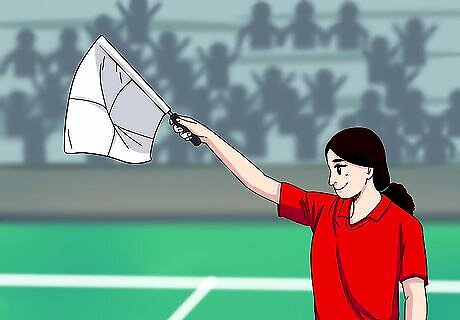
Watch the sideline referee point in one direction for the throw-in signal. Once the ball crosses out of the field of play, the sideline referee runs to where the ball crossed into the out-of-bounds zone. When they arrive, they point their flag in the direction of the throw-in. This is the attacking direction of the team who has the throw-in. If the ball goes out and it is not in a sideline referee's half of the field, they only show which direction the throw is in if it is an obvious call. If it is not an obvious call, the on-field referee makes the decision of which direction the throw-in is. A ball is 'out' once the entire ball has crossed the line marking the field of play. If the ball is only half out, play continues.

Note that the ref will stop and point their flag for an offside. The offside offence is shown by the sideline referee standing still in line with the offside player and pointing their flag directly out into the field of play. Their arm will be perpendicular to their body. The sideline referee does not blow a whistle when an offside occurs. The offside rule is a little bit confusing to understand. An offside is called when a team is attacking and they pass the ball to a player on their team who is in front of them. If the player who receives the pass was in front of the last player of the defending team when the pass was made, an offside is called. For example, the sideline ref puts up their flag if an attacking player passed the ball to a teammate who, when the player passing the ball makes contact with it, is closer to the goal than all of the defenders on the other team. The rule is in place to make sure that players cannot simply camp out in their opponents' half of the field and receive long passes from their teammates.
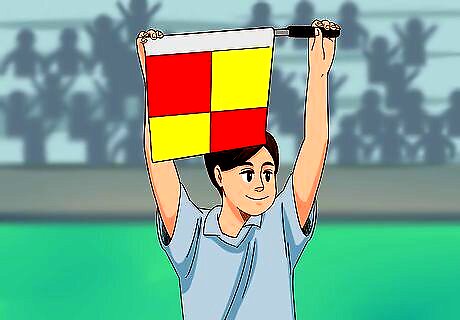
Observe the sideline referees making a rectangle for a substitution. For this signal, the sideline referees run to halfway along the side of the field, and make a rectangle above their head with their arms and the flag. They usually hold this signal for 5-10 seconds, so people get a chance to see it. There will also often be someone holding a board with the number off the player coming off, in red, and the number of the player going on, in green. Both of the sideline referees usually make this signal.


















Comments
0 comment